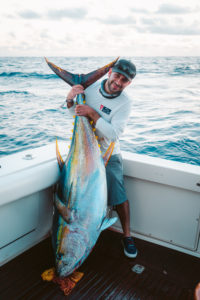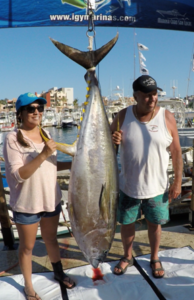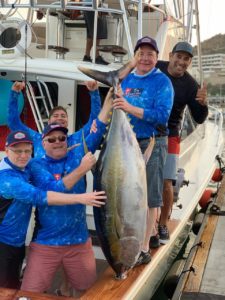Fishing, as a centuries-old practice, has seen its fair share of innovations and evolutions. One such innovation that has turned heads in the angling community is kite fishing, especially when targeting elusive tunas. When done right, it can provide a tactical edge, bringing in the big catches that every angler dreams of. In this guide, we’ll explore the optimal number of kites to have onboard and delve into techniques that elevate your kite fishing game.
The Logic Behind Kite Fishing for Tunas
Before delving into numbers and tactics, it’s essential to understand the unique benefits kite fishing offers:
- Superior Bait Presentation: Whether using live baits or artificial ones like a yummee fish, kites suspend them right at the surface, mimicking the movement of a distressed prey – an irresistible sight for predatory tunas.
- Avoiding Predatory Birds: By keeping baits at the surface and out of the air, kites ensure they remain undisturbed and uneaten by birds, making sure your bait reaches the intended predator: the tuna.
- Stealth and Elegance: With the fishing line out of the water, tunas are less likely to be deterred by visual or tactile distractions.
Determining the Right Number of Kites
While one can technically fish with a single kite, for best results and to account for contingencies, the magic number is typically two or three:
- Redundancy: One of the golden rules of any expedition is to have a backup. If a kite becomes damaged, you don’t want to be left stranded. Having an extra kite or two ensures uninterrupted fishing.
- Multiple Angles: Especially on larger vessels or when there’s a team of anglers, using two kites allows you to cover a broader area of water, potentially doubling your chances of a catch.
- Tailoring to Conditions: Different kites are suited for varying wind conditions. By having a range, you can optimize your approach based on the day’s wind patterns.
Mastering the Use of Kites for Tuna Fishing
Successfully using a kite requires more than just letting it fly. Here’s a concise guide to getting the most out of your kite fishing experience:
- Kite Setup: Securely attach the kite to a dedicated kite rod and reel, preferably with braided line. Use specialized kite clips to fasten the fishing line to the kite line.
- Launch with Precision: Gently release the kite, letting the wind catch it. Gradually let out the line, allowing the kite to ascend to the desired altitude.
- Bait Strategy: Using release clips, attach the bait to the kite line. As you release more kite line, your bait will be presented further from the boat, giving tunas a clear path to attack without boat-related disturbances.
- Fine-tuning: Adjust the kite’s height to ensure the bait is presented just right. This might vary based on the bait type and the observed behavior of the fish.
- The Strike Moment: Upon a tuna strike, the fishing line will detach from the kite clip. This leaves you battling the fish directly, with the kite out of the equation.
- Retrieve and Reset: Post-catch or if you need to change baits, reel in your kite, unclip the fishing line, and you’re ready to set up again.
Final Thoughts and Pro Tips
- Versatile Baiting: While live baits like mackerels are popular, don’t shy away from using artificial baits like yummee fish, which can sometimes prove more durable and equally attractive to tunas.
- Stay Alert: Kite fishing demands attention. Always monitor the kite’s movement and position and the behavior of the bait to ensure everything’s functioning as desired.
- Safety First: Kite fishing, like any fishing method, requires awareness of your surroundings. Ensure a clear space around when launching or retrieving kites.
In summary, kite fishing for tunas, when armed with the right knowledge and tools, can provide unparalleled results. With at least two kites onboard and the techniques highlighted above, you’re well-equipped to venture into the waters and claim your prize catch. Tight lines and happy fishing!



